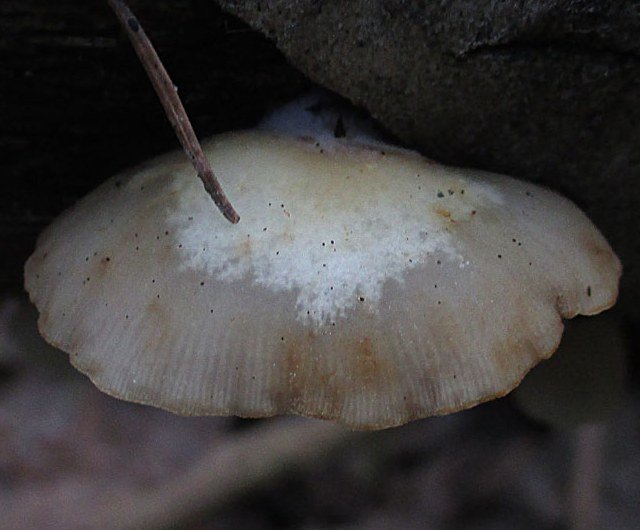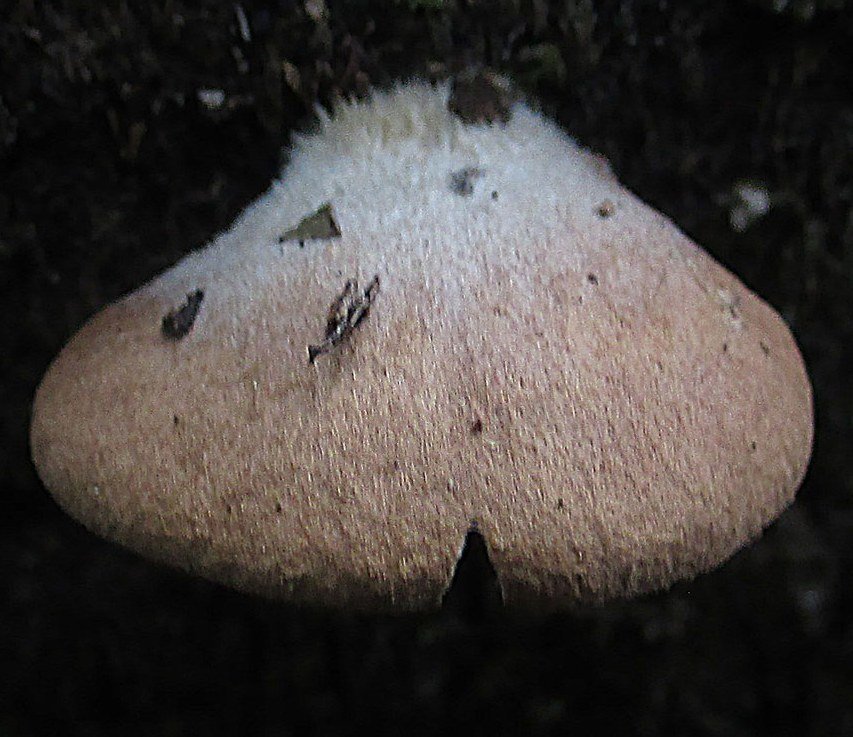Flattened Crepidot (Crepidotus applanatus)
- Diviziona: Basidiomycota (Basidiomycetes)
- Fizarana: Agaricomycotina (Agaricomycetes)
- Kilasy: Agaricomycetes (Agaricomycetes)
- Kilasy: Agaricomycetidae (Agaricomycetes)
- Karazana: Agaricales (Agarika na Lamellar)
- Fianakaviana: Inocybaceae (Fibrous)
- Rod: Crepidotus (Крепидот)
- Type: Crepidotus applanatus (Flattened Crepidotus)
:
- Agaric plane
- Agaricus Malachius

lohany: 1-4 cm, semicircular, in the form of a shell or petal, sometimes, depending on the growth conditions, rounded. The form is convex in youth, then prostrate. The edge may be a little striped, tucked inward. Soft, somewhat flabby to the touch. The skin is hygrophanous, smooth or finely velvety, especially at the point of attachment to the substrate. Colour: White, becoming brownish to pale brown with age.
Hygrofanity of the hat, photo in wet weather:

And dry:

takelaka: with a smooth edge, adherent or descending, quite frequent. Color whitish to light brown or brownish, brown at maturity.
leg: missing. Rarely, when conditions cause mushrooms to grow straight up rather than “shelf”, there may be an almost circular base of some sort, giving the illusion of a vestigial “leg” where the mushrooms attach to the tree.
pulp: soft, thin.
fofona: tsy ambara.
tsiro: nice.
vovoka spora: Brown, ocher-brown.
disadisa: Non-amyloid, yellowish brownish, spherical, 4,5-6,5 µm in diameter, finely warty to smooth, with pronounced perispore.
Typically saprophyte on dead stumps and hardwood logs in hardwood and mixed forests. Less often – on the remains of conifers. Prefers maple, beech, hornbeam from deciduous and spruce and fir from conifers.
Summer and autumn. The fungus is widely distributed in Europe, Asia, North and South America.
Oyster oyster (Pleurotus ostreatus) may be similar at a glance, but flattened Crepidote is much smaller. In addition to size, mushrooms clearly and unambiguously differ in the color of the spore powder.
It differs from other crepidots in its smooth and finely velvety, felted at the base, whitish surface of the cap and in microscopic features.
Unknown.
Sary: Sergey









